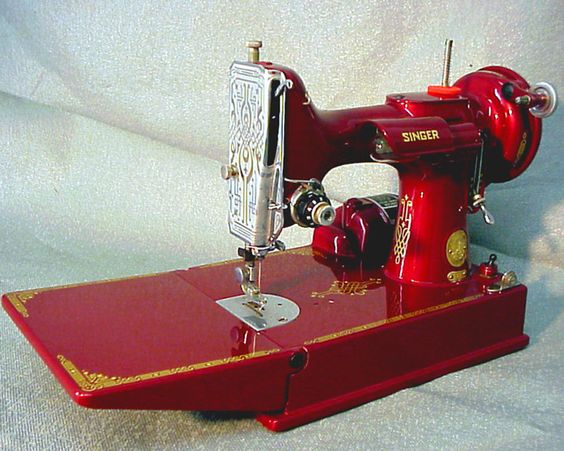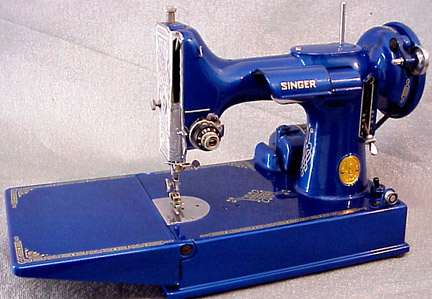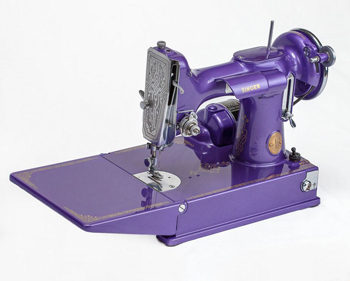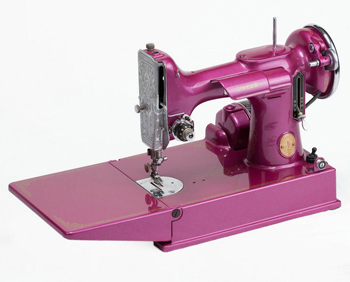Featherweights Aren’t Just Black Anymore
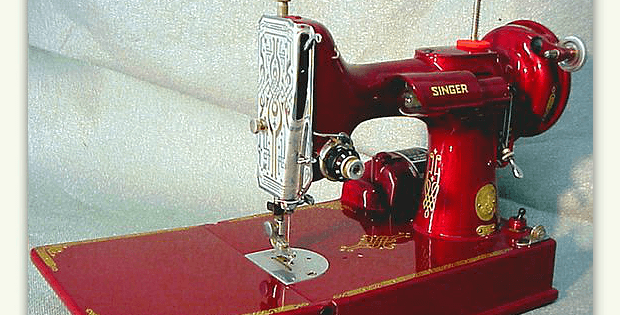
Turn a Scuffed up Machine Into a Colorful Beauty!
Quilters love Singer Featherweight sewing machines. They’re lightweight, so they’re easy to haul to class, they’re easy to maintain and they just keep on sewing. Plus, they look great, even with a little scuffing.
 Photo courtesy of April 1930’s Featherweight Shoppe.
Photo courtesy of April 1930’s Featherweight Shoppe.
The most popular model, the 221, was introduced during the 1933 World’s Fair. Weighing just 11 lbs., it quickly became a classic.
The machines have been out of production for several decades now. However, they are still very popular, especially among quilters, and are great collector’s items.
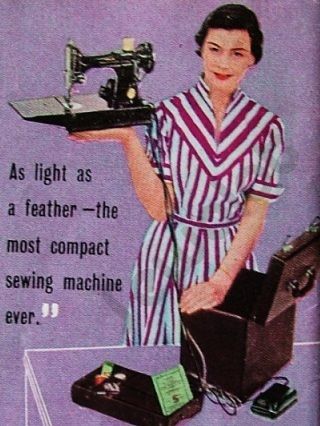 Image courtesy of Sewalot.com.
Image courtesy of Sewalot.com.
Many of today’s quilters learned to sew on Featherweights, so they’re already familiar with these popular machines. If you’re new to the Featherweight, you’ll catch on quickly. It’s a solid, portable, easy to use basic machine.
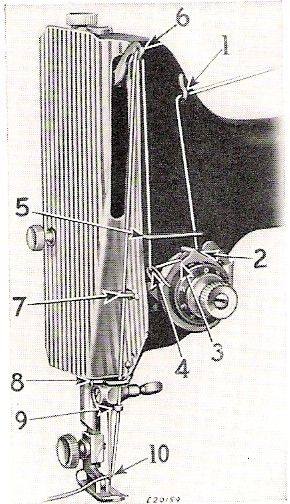 How to thread a Featherweight. Image courtesy of April 1930’s Featherweight Shoppe.
How to thread a Featherweight. Image courtesy of April 1930’s Featherweight Shoppe.
With a little looking you can find someone to refurbish and even repaint your old Featherweight. Some will even paint it in decorator colors. It’s a bit pricey, but the end result will be a machine that will be cherished for generations.
We found the following examples of repainted Featherweights at FeatherweightsInColor.com.
There are many other colors available for painting your Featherweight. This is not a do-it-yourself project. You’ll want a seasoned professional for a flawless paint job. Find a reputable shop with just such a person on staff and they’ll help you choose the right color for you. If you can’t decide, classic black is always a good choice for refreshing a tired looking machine.






